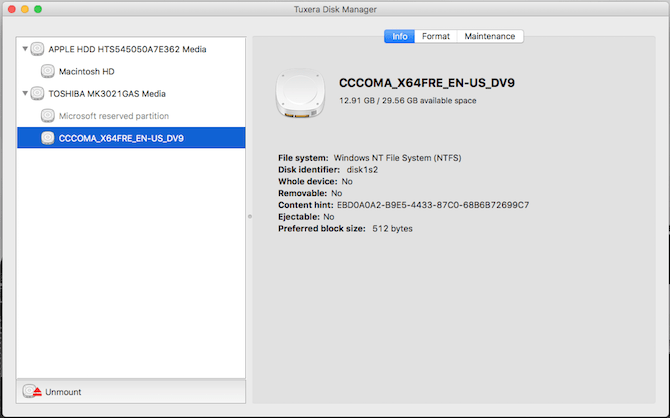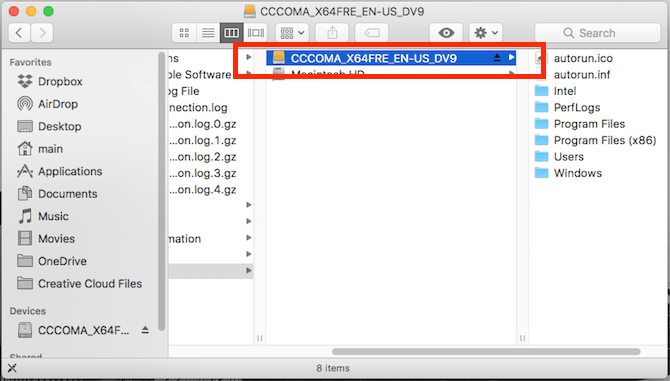If you work in IT (and/or you’ve ever read this site), you’ve probably created USB Bootable Media to reinstall an Operating System before. With Windows (since 2015 specifically), a wonderful tool called Rufus has made this process much simpler than it used to be, with a 4(ish) click process to go from downloaded ISO to bootable USB drive in a snap. Unfortunately, Microsoft made things a bit more difficult for us with Windows 10, Version 1909.
As I’ve mentioned in previous articles (here, here, and here), UEFI bootable media (at least with Windows and their Native Installers) requires a single FAT32 partition on the flash drive. This was difficult back in the Windows 8.1 days because our custom built compressed WIM files regularly exceeded 4 GB – the max file size for FAT32. To circumvent that restriction, I previously utilized some tricks with the Microsoft Deployment Toolkit to leverage (2) Flash Drives, one with the bootable media and the other with the WIM file. This worked.. but it was very clunky. Fast forward to 2015, we (once again) were provided with the ability to “Split WIMs” – or more simply – break these files up into multiple (<4GB) pieces, allowing them to fit on a single FAT32 (bootable UEFI) partition. From this point forward, creating custom USB images became much easier. But what’s all this have to do with Windows 10, Version 1909 and Secure Boot?
In Microsoft’s infinite wisdom, the latest MSDN downloads of v.1909 have a single WIM file exceeding 4 GB. Why? Consider me stumped. Microsoft could have split this WIM up for us in advance, but they chose not to. But where does Secure Boot come into play? If you download the latest Rufus, and point it to a fresh download of v.1909 from MSDN, you will be presented with the following screenshot:
I'm not good with computers at all but thanks to online classes we now need to become real computer savvy real quick! For my online class, we are supposed to download windows 10 with Bootcamp but it will not work on my computer! Every time I download windows on my mac straight from Microsoft it keeps coming up as CCCOMAx64FREEN-USDV9 because of this I am unable to download it so. Jul 15, 2020 Double click the ISO we downloaded earlier to mount it. It will mount as CCCOMAX64FREEN-USDV9. Our flash drive is labeled ESD-USB.
If you click START and proceed, once complete you will be presented with the following prompt:
Create Installation Media Mac
Clicking More Information will take you here: https://github.com/pbatard/rufus/wiki/FAQ#Why_do_I_need_to_disable_Secure_Boot_to_use_UEFINTFS
So, what happened here? Long story short, Rufus is using a system called UEFI:NTFS to create this boot drive. Please check out and read their GitHub as it explains in detail what it does and why it exists (for this audience: its existence is to allow UEFI boot via an NTFS partition).
But why the need to disable Secure Boot? Again, check out this link for details.
(TL;DR – It’s not UEFI:NTFS’ fault. It’s Microsoft politics.) Got it? Great.
But isn’t the point of this article to explain how to bypass such a requirement? Read on.
Get to the point, already!
How can I skip the “Disable Secure Boot” requirement?
If you’ve followed one of my Customized Windows build guides before, you already know the answer to this. We’re going to do the following:

- Extract the ISO
- Use DISM to split the WIM into 3.8 GB parts
- Delete the original WIM
- Use OSCDIMG to repackage the ISO
- Run Rufus again, pointing to the new ISO
- Successfully create a FAT32 Windows 10 v.1909 UEFI Bootable USB Drive
Let’s do it.
- Download the Windows 10 Version 1909 ISO from MSDN. In my case, I’m going to download the “Business Edition”. The latest build posted at the time of this article’s writing is named “en_windows_10_business_editions_version_1909_updated_dec_2019_x64_dvd_d16597e9.iso”
- Download the Windows Assessment and Deployment Kit (ADK) for Windows 10 Version 1903 (yes, 1903) from here.
- Open the Windows ADK for Windows 10 installer.
- Select and install
Deployment Tools
- Select and install
- Double click the Windows 10 Version 1909 ISO to mount it
- Open the recently mounted ISO Drive Letter
(D: “CPBA_X64FRE_EN-US_DV9” in my case) CTRL+A(to select all) andCTRL+C(to copy)- Create a new folder off the C: drive named 1909Working
- Navigate to C:1909Working and
CTRL+V(to paste)
- Open a Command Prompt as Admin
WinKey(to open the start menu) and typeCMD- Right Click Command Prompt and select Run As Administrator > Accept the UAC Prompt
- Change Directory to
C:1909Workingsources - Run the following command to split the WIM into ~3.8GB pieces:
dism /Split-Image /ImageFile:install.wim /SWMFile:install.swm /FileSize:3800 - Delete the original WIM with the following command:
del /f /q install.wim - Change Directory to
C:Program Files (x86)Windows Kits10Assessment and Deployment KitDeployment Toolsamd64Oscdimg - Run the following command to create a new ISO:
oscdimg -m -o -u2 -lCPBA_X64FRE_EN-US_DV9 -udfver102 -bootdata:2#p0,e,bC:1909Workingbootetfsboot.com#pEF,e,bC:1909Workingefimicrosoftbootefisys.bin C:1909Working C:en_windows_10_business_editions_version_1909-fixed.iso - Find your newly created ISO located at: C:en_windows_10_business_editions_version_1909-fixed.iso
- You may close all windows at this point and clean up (remove) the C:1909Working directory.

- Insert your USB flash drive
- Download Rufus and load up your new ISO:
- Click the Select button and navigate to C: and select
en_windows_10_business_editions_version_1909-fixed.iso - Ensure your Target Flash Drive is selected under Device
- Ensure the Boot selection is listed as
en_windows_10_business_editions_version_1909-fixed.iso - Ensure the GPT is selected Partition scheme
- Ensure the UEFI (non CSM) is pre-selected under Target system
- Ensure FAT32 is selected under File system
- Click Start
- Click OK on the warning prompt if you understand that all data on the flash drive will be destroyed
- Click the Select button and navigate to C: and select
Congratulations! You’ve just circumvented a silly Microsoft decision that made performing USB reimages with a UEFI device more difficult than it needed to be! Go forth and image your devices without the need to disable Secure Boot!
It’s been too long! I should have a new walkthrough once Version 2004 drops in the next few weeks. We’ll have to see if Microsoft makes that version’s WIM greater than 4GB. 🙂
Making a Bootable Windows 10 USB Drive on macOS High Sierra
November 23, 2017
Cccoma_x64fre_en-us_dv9 Iso
I recently put together a new gaming PC for the first time in several years. This was my first time installing Windows 10, and it turned out to be a bit of a challenge, as I opted to purchase a downloadable copy through Microsoft’s website and transfer it to a USB drive on my Mac running macOS High Sierra. Microsoft provides a tool for creating a bootable Windows 10 installation drive from an existing Windows system, but not for macOS, and there is some conflicting information online about how to go about doing that.
My first instinct was to use dd to copy the ISO to the USB drive (as one typically does when installing a Linux distribution, for example), but it turns out that this does not satisfy the UEFI boot process. After some research and a lot of trial and error, I found that the USB drive must be formatted with a FAT32 partition and the MBR partitioning scheme, after which you can simply mount the Windows 10 ISO in macOS and copy the files to the drive.
Formatting the USB drive can be done from the command-line fairly easily. First, run diskutil list and find the identifier of the USB drive (this will be something like disk2 or disk3; make sure you find the right one, since you could erase the wrong drive and lose data if you don’t use the correct identifier). Next, the following command can be used to format the drive (replace disk# with the actual identifier for your USB drive) and mount it as a volume named WINDOWS10:
Cccoma X64fre En Us Dv9
Now you can mount the Windows 10 ISO by opening it through Finder and copy its contents to the USB drive. Oddly enough, copying the files through Finder did not work for me - I received an error about the files being too large, even though the partition on the drive was definitely big enough, and no individual file appeared to be too large for the FAT32 file system. Eventually I found that using cp from the command-line did work without any issues. When I opened the Windows 10 Fall Creators Update ISO, it mounted as a volume named CCCOMA_X64FRE_EN-US_DV9, so I used the following command to copy its contents to the USB drive:
This command will take a while, and once it finishes, you can safely eject the drive through Finder and you should be able to boot from it to install Windows 10 on a PC.